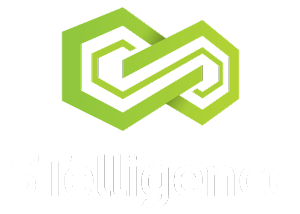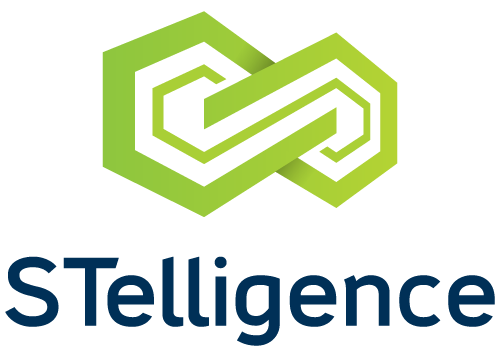
Over the past two years working closely in the field of Generative AI (GenAI), one of the most common misconceptions we encounter among organizations is this:
“If we want to build our own GenAI solution, we must fine-tune a model ourselves.”
Let’s clarify this concept by first understanding the foundations.
Understanding the Foundation
Large Language Models (LLMs) are pre-trained by their providers using vast amounts of publicly available data. Once released, the core weights of these models are not user-editable, and locally hosted models are typically frozen unless fine-tuned by the organization. In contrast, commercial LLMs (e.g., OpenAI, Anthropic) may receive ongoing behind-the-scenes updates from the provider—but these changes are outside the customer’s control and usually undocumented.
So when an organization wants to implement a GenAI solution, the first strategic question should be:
“Is the knowledge already embedded in the pre-trained LLM sufficient, or do we need to supplement it with our own proprietary or updated data?”
There are two primary methods to incorporate additional knowledge into GenAI systems:
- Fine-Tuning
- Retrieval-Augmented Generation (RAG)
What is Fine-Tuning?
Fine-tuning is the process of re-training an existing LLM using your own specialized dataset. This allows the model to internalize new knowledge or adopt specific linguistic styles, tone, or behavior required by your organization.
Benefits:
- Enables the model to “remember” new information natively.
- Suitable for scenarios requiring domain-specific language, tone of voice, or local dialects.
- Effective for repetitive or structured tasks (e.g., document classification, intent detection).
Challenges:
- Traditionally time-consuming and resource-intensive—requiring significant compute infrastructure and ML expertise.
- Risk of overfitting or bias if training data is unbalanced or limited.
- While full-model fine-tuning is costly, newer parameter-efficient methods (e.g., LoRA, QLoRA, adapters) allow incremental updates with lower compute—though not as fast as editing a RAG knowledge base.
- Not ideal for rapidly changing information, as even lightweight fine-tuning must still be scheduled and validated.
What is RAG (Retrieval-Augmented Generation) ?
RAG is a more flexible method that enhances LLMs by connecting them to external data sources. Your internal documents, emails, or knowledge bases are first converted into vector representations and stored in a searchable database.
When a user asks a question, the LLM dynamically retrieves the most relevant information and generates an answer based on both its pre-trained knowledge and the retrieved context.
Benefits:
- Easy to update—no re-training required; just modify the underlying knowledge base.
- Ideal for fast-changing or real-time information (e.g., news, company policies).
- Often lower machine learning compute cost compared to fine-tuning, though standing up and maintaining a robust retrieval pipeline introduces its own data-engineering complexity.
- Suitable for use cases requiring reference to external documents (e.g., AI-powered chatbots for employee handbooks).
Challenges:
- Does not alter the core behavior or personality of the model.
- Answer accuracy depends on the quality of the retrieval system.
- Requires effort to properly structure and embed data for optimal retrieval.
How to Decide: Fine-Tuning or RAG?
The right choice depends on your business objectives, data characteristics, and technical readiness.
Goal
- Fine-Tuning: Embed new knowledge permanently
- RAG: Refer to updated knowledge at runtime
Data Type
- Fine-Tuning: Stable, domain-specific, rarely updated
- RAG: Dynamic, frequently changing
Use Case
- Fine-Tuning: Change model behavior or tone
- RAG: Provide real-time, document-based answers
Technical Demand
- Fine-Tuning: High – ML expertise required
- RAG: Moderate – focus on data structuring
Traceability
- Fine-Tuning: Low – knowledge is baked into the model and hard to trace
- RAG: High – can cite source documents and page numbers
Based on the summary above, it is clear that the choice between Fine-Tuning and RAG depends primarily on the objective of your GenAI system:
- Do you need the LLM to internalize proprietary knowledge and change its tone or behavior? (Fine-Tuning)
- Or do you simply need it to reference up-to-date information at the time of the query? (RAG)
To make the right decision, it is essential to design the system holistically—understanding the use case and ensuring the data flow aligns with the intended purpose.
For example:
If your data changes weekly, Fine-Tuning is not suitable. By the time the model is trained—even with efficient methods—the underlying data may already be outdated, making the effort inefficient.
Conversely, if your data is relatively stable, rarely updated, and highly domain-specific, RAG may not be the optimal approach. Continuously retrieving information on-the-fly may introduce operational overhead, and cannot adjust the model’s internal behavior or understanding of specialized language as effectively as Fine-Tuning can.
Traceability Considerations for Enterprises
In enterprise and regulatory contexts, traceability is critical. Each method presents different levels of transparency:
- Fine-Tuning: The model integrates knowledge deeply, making it difficult to trace the source of any specific answer. Although it is possible to introduce post-training attribution or provenance systems, native traceability is limited.
- RAG: Since it references external content, it can be designed to cite exact sources (e.g., “Page 5 of the latest HR policy”). This builds trust and accountability, especially in highly regulated industries.
Strategic Questions Before You Begin
To determine the best path, consider these questions:
- Is the data we need to use frequently changing?
- Does our team have the capability to manage model training and deployment?
- Do we need to trace the source of AI-generated answers for compliance or transparency?
- Do we need to adjust the model’s tone, style, or language behavior, or simply enrich its knowledge?
Final Thought
There is no universally “correct” method—only the right choice for your context.
- If your organization needs agility and frequently updated information, RAG is typically the more suitable option.
- If your objective is to deeply embed proprietary knowledge and you’re equipped with the right expertise, Fine-Tuning may offer long-term value.
Successful GenAI deployment begins not with technology, but with clarity of purpose, understanding of your data, and alignment with your business environment.

